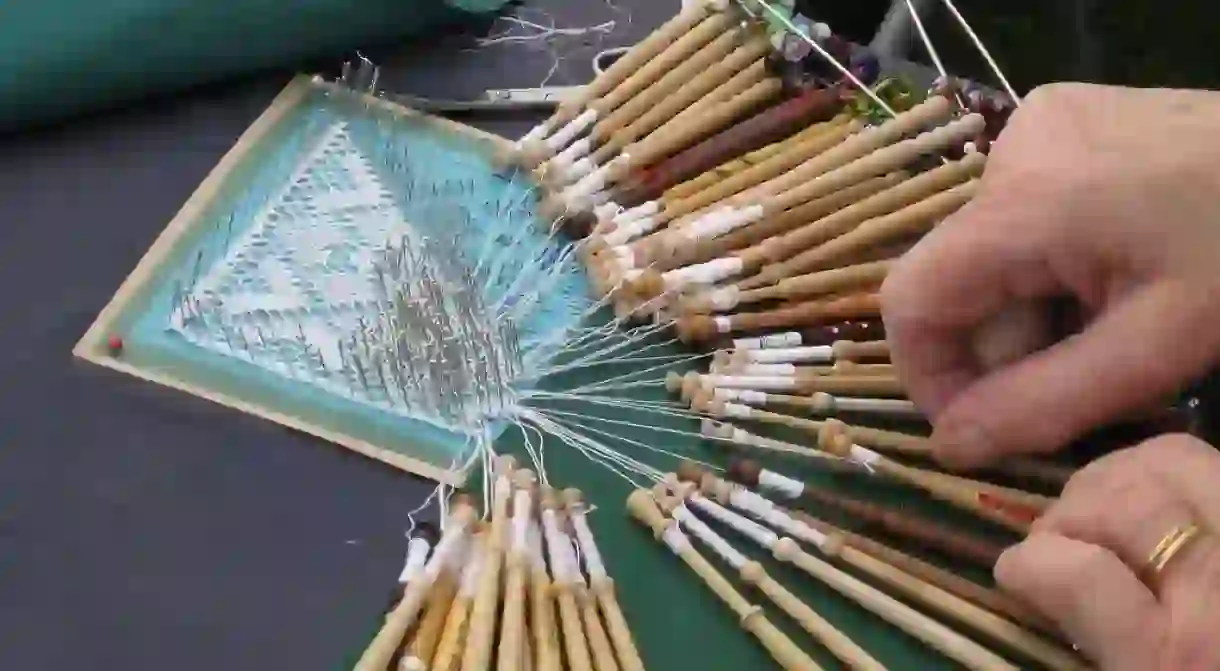Garments Whose Origins are Native to Malta

For a group of islands that have recorded to have civilisations dating back to an astonishing 5,900BC, there are bound to be garments that originated in Malta. Some clothes were adapted from other parts of the world while others are unique to the islands, and some have the main purpose of protecting their wearers from the intense sunshine that hits Malta every summer. Here are a few garments native to Malta that you might not have discovered elsewhere in the world.
Maltese lace
Lace making (bizzilla) was mastered in Malta by the mid-17th century and is still popular today. Adapted from Italian, Genoese lace of being tightly woven, Maltese lace commonly bears the Maltese cross within its designs to distinguish it from others. The eight-pointed cross is formed using what the makers call cloth or whole stitch. Found in many souvenir and craft shops across Malta and Gozo, lace products are predominantly used for table and church altar decoration or in the form of fans, but you will also find garments such as lace shawls, head coverings and sun-protecting parasols. Using Spanish silk, Maltese lace is commonly beige or cream in colour and although it can now be made using machinery, there are many lace-makers still using bobbins, keeping the handmade tradition alive. Lace-making has become popular again over the past few decades and you can even study for a formal qualification in it at the University of Malta.

Knights’ garments
Although history books are a little fuzzy regarding dates, the Knights Hospitaller, the Order of St John, ruled Malta from 1530 to 1798 but, from as far back as 1248, the Pope allowed knights to wear sleeveless surcoats instead of the customary long-sleeved robes. These robes were predominantly black, or dark brown and bore the white Maltese cross. Somewhere between 1250 and 1350, the robes changed to red. The eight-pointed cross dates back to the Byzantine period, where it was often used in decoration, but is most commonly associated with the Order of St John, The Knights Hospitaller and the Sovereign Military Order of Malta.

The traditional art of ganutell
The intricate Maltese art of making flowers from thin wires and beads, known as ganutell, became known as a traditional Maltese art in the 18th century. Initially made by monks to adorn monasteries, ganutell today is commonly seen in ornate displays in the 365 churches across Malta and Gozo. With skills passed down through the generations, ganutell is still made today, but using the correct methods of weighted bobbins and high-quality wires of certain thickness is rare. Ganutell has been featured on the catwalks by fashion house Comme des Garçons and is regularly commissioned across Malta to form part of headdresses for weddings and for keepsake brooches.

Head-coverings, known as għonella
Probably the most well-known garment when it comes to traditional clothing of Malta is the Għonella, also known as Faldetta. This headdress with a shawl incorporated, was made from cotton or silk and usually black in colour but in the 16th century, għonella worn in bright colours was a status symbol for wealthier ladies. Framing the head and face in a protective arch shape, the arch was formed from cardboard, cane or even whale bone, while the material of silk or cotton covering it was starched to help keep its shape. Worn during all seasons, the għonella provided protection from the sun during the scorching summer months and sheltered the wearer from rain and wind during the cooler months. The long sides could be wrapped around the body for extra warmth or tightly held in the hands to keep it sturdy during inclement weather.














